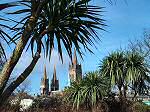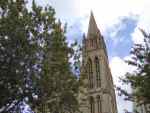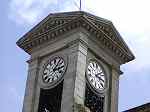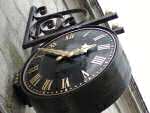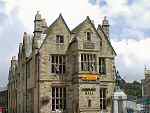| The cathedral city of Truro is situated halfway along the
length of Cornwall and mid-way between the county's north and south coasts.
This strategic position has led to it becoming the county capital of Cornwall
succeeding both Launceston and Bodmin, previous holders of this title. It
is situated near three rivers, the Truro, the Kenwyn and the Allen. This
gave it its name of Truro derived from the Cornish Tri-veru, meaning three
rivers and led to its development as a tin port. Truro became a stannary
town in 1305 with a Coinage Hall being built in the 14th century, this was
superceded by the present day Victorian building on the same site. By the
18th and 19th century Truro was flourishing on the tin trade with wealthy
mine owners building expensive town houses and the town itself becoming
a centre of fashion and high society. However it was not until 1877 that
Truro became a city with the ancient Cornish See being re-established with
Truro as its centre. The building of Truro Cathedral itself was started
three years later in 1880 with work being completed 30 years later in 1910.
The cost of the building was raised by public subscription in Cornwall itself.
The cathedral still dominates the city but the centre has been tastefully
changed into becoming one of the best shopping centres in Devon and Cornwall,
retaining its picturesque Georgian streets whilst developing modern shopping
areas such as Lemon Quay. |
